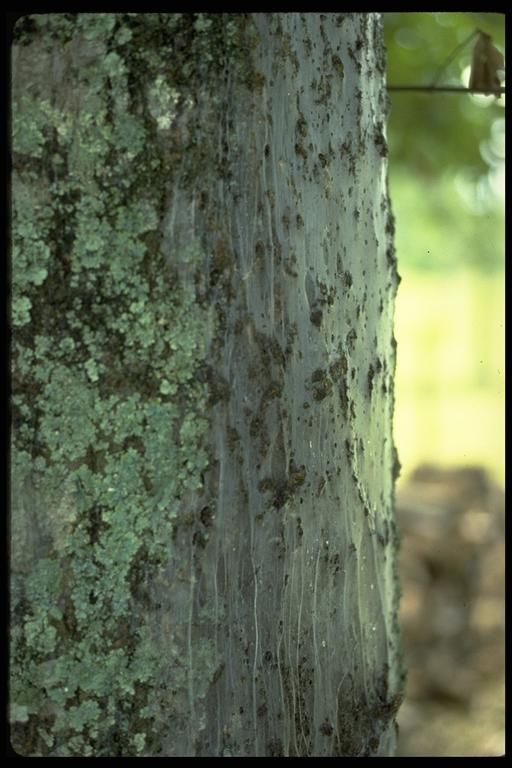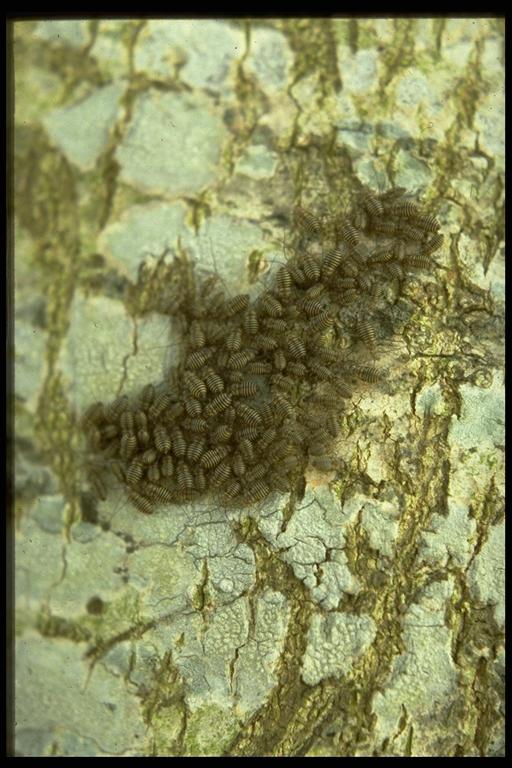
Barklice, Archipsocus nomas Gurney (Psocoptera: Archipsocidae), silk-wrapped tree trunk. Photo by Drees.
Common Name: Barklice
Order: Psocoptera
Scientific Name: Varies
Description: Barklice are tiny (less than 1/8 inch long) brownish insects. Adults possess two pairs of membranous wings, with the forewing being larger than the hind wing. Wings are held roof-like over the body when at rest. Barklice have long, thin antennae.
Another species commonly occurs in Texas: Cerastipsocus venosus Burmeister (Psocoptera: Psocidae). Members of this species are larger, growing to about 1/4 inch long, and adults have shiny black wings. Nymphs appear dark gray and pale banded between abdominal segments. Nymphs are very gregarious, clustering together in a “herd” on the bark. They appear in the spring (April) and are also considered harmless to the trees they live on.
Life Cycle: Eggs of psocids are laid singly or in clusters and are sometimes covered with silk or debris. Nymphs hatching from eggs resemble tiny wingless adults. Most species develop through six stages (instars). Bark lice are gregarious and live together underneath layers of silken webbing.
Habitat and Food Source(s, Damage): Mouthparts are for chewing. Barklice feed on fungi, algae, dead plant tissues and other debris. Consequently, they are considered harmless and perhaps beneficial to the trees they infest. Barklice first appear in the spring. However by late summer, silken webbing produced by Archipsocus nomas Gurney, can completely wrap a large tree from the base of the trunk to the tips of the branches. Some people consider this webbing to be unsightly. Left undisturbed, these insects apparently eat and remove the silk webbing before populations decline by the end of the year.

Barklice, Cerastipsocus venosus Burmeister (Psocoptera: Psocidae). Photo by Drees.
Pest Status: Communal web spinners; can wrap tree trunks and branches in layers of silken webbing, causing some concern; tiny and generally inconspicuous; medically harmless.
For additional information, contact your local Texas A&M AgriLife Extension Service agent or search for other state Extension offices.
Literature: Borror et al. 1989; Little 1963.